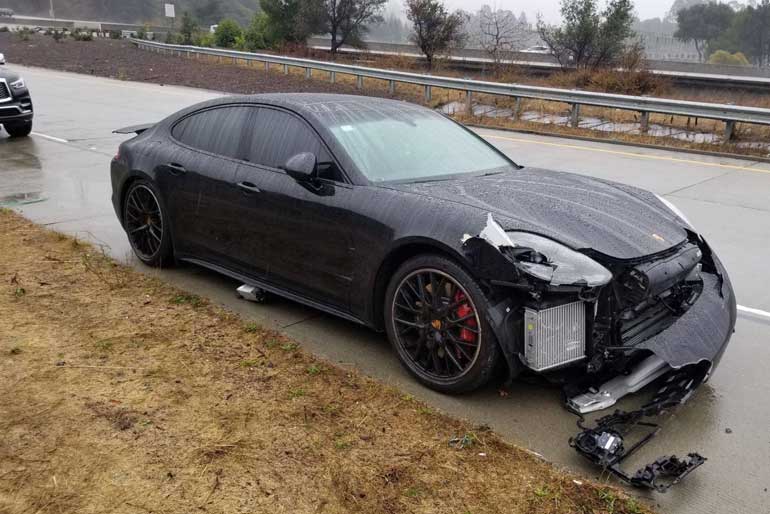You may have just bolted on a set of bigger wheels, swapped to performance rotors, or noticed your pads dragging slightly on one side. During that moment, you discover a slim ring of metal called a caliper bracket spacer. At only 2 millimeters thick, it looks almost laughably small. Yet that wafer can restore proper alignment, stop uneven pad wear, and even calm down brake squeal. Small part, huge payoff.
Brake System Basics in Plain English
Think of your brake assembly as a clamping system:
- Rotor (disc)—the spinning plate attached to each hub.
- Caliper—the squeeze device; inside are pistons that push pads against the rotor.
- Caliper bracket—the sturdy arm that anchors the caliper body to the knuckle or axle housing.
If the bracket isn’t positioned exactly where the rotor expects, the pads rub, heat builds up, and stopping power falls off. That’s where a shim or spacer slips between the bracket and its mounting point to nudge everything into the best possible spot.
The Big Deal About “2 mm”
Why not 1 mm or 3 mm? Because brake hardware tolerances are tight:
- Factory clearances are often under half a millimeter.
- Rotor run‑out (side‑to‑side wobble) of more than 0.05 mm can already cause pedal pulsation.
- Pad centering must stay so accurate that both friction surfaces touch at precisely the same time.
Testing shows that 2 mm is often the sweet‑spot correction when an aftermarket rotor is slightly thicker, when an adapter plate pushes the wheel hub outward, or when casting variations stack up on older axles. Anything thinner might not solve the issue. Anything thicker may move the caliper too far and reduce piston travel, leaving you with a spongy pedal.
Situations Where a Spacer Saves the Day
- Big‑brake conversions—Oversize rotors move the disc face outward; a spacer pulls the caliper outward to match.
- Wheel offset changes—Aftermarket rims with deeper dish can alter hub geometry in subtle ways.
- Warped or resurfaced rotors—Machining removes iron; the bracket ends up a hair too close.
- Axle or knuckle replacement—Casting differences, even among identical part numbers, can shift alignment.
- Pad taper or uneven wear—If inner and outer pads don’t wear at the same rate, spacing may realign them.
What a Spacer Will—and Won’t—Do
| Will Help With | Won’t Fix |
|---|---|
| Centering pads so both halves touch evenly | Sticking caliper slides—these need cleaning or new hardware |
| Eliminating light, rhythmic scraping sounds | Frozen pistons—the seal kit or caliper body might be shot |
| Restoring full pad contact after a rotor upgrade | Glazed pads—you’ll still need to re‑bed or replace them |
| Reducing pedal shake caused by minor run‑out | Serious hub warpage—you may need a new hub assembly |
Choosing the Right Spacer Material
- Stainless steel—Resists rust, handles high heat cycles, very common for road cars.
- Anodized aluminum—Lightweight and often color‑coded, popular in track builds.
- Hardened steel with zinc coating—Budget option that still fights corrosion.
- Titanium—Exotic, pricey, sometimes used in racing where every gram counts.
Avoid plain mild steel washers from the hardware store; they flatten under torque and corrode fast.
Tools and Supplies You’ll Need
- Jack and axle stands (rated for your car’s weight)
- Lug‑nut wrench
- Socket set with breaker bar
- Torque wrench capable of 35–120 ft‑lb (47–163 N·m)
- Thread locker (medium strength)
- Wire brush and brake cleaner
- High‑temperature anti‑seize or silicone grease
- Two new 2 mm spacers (one per side)
- Optional: Dial indicator if you plan to measure rotor run‑out afterwards
Step‑by‑Step Installation Walk‑Through
- Park and secure—Flat ground, parking brake, wheel chocks at the rear.
- Loosen lug nuts slightly before lifting; easier now than mid‑air.
- Raise the front (or rear) with a jack and settle the car on stands.
- Remove wheel and set aside where it won’t roll away.
- Inspect the caliper bracket bolts—Most cars use two.
- Break loose bracket bolts with breaker bar.
- Slide caliper off rotor and support it with wire; avoid stressing brake hose.
- Unbolt the bracket fully and clean the mounting face with a wire brush and cleaner.
- Slip the spacer onto each bolt or onto the bracket face, depending on design.
- Apply thread locker to bolt threads.
- Reinstall bracket and run bolts finger‑tight.
- Torque to spec—Check your service manual; many are near 90 ft‑lb (122 N·m).
- Reinstall caliper and pads; verify they glide freely.
- Spin the rotor by hand—No rubbing? Good.
- Put wheel back on, snug lug nuts, lower car, torque lugs in a star pattern.
- Pump the brake pedal until firm before driving.
Bedding Pads After Spacer Work
Even if you didn’t install new pads, the contact pattern has changed slightly. Perform a gentle re‑bedding routine:
- Find a quiet road.
- Perform five slow stops from 30 mph (50 km/h) to 5 mph (8 km/h).
- Allow light cruise for a mile to cool the brakes.
- Repeat if needed until pedal feels consistent.
Safety Checks You Shouldn’t Skip
- Fluid level—Spacers don’t add volume, but pumping pistons back can push fluid into the master cylinder. Top off if needed.
- Rotor run‑out—If pulsation persists, use a dial indicator; specs are often <0.1 mm total.
- Pad overhang—Look through inspection window; pad should cover rotor’s full face without sticking out.
- Retorque after 100 miles—Vibration can relax fasteners slightly.
Common Troubles and Quick Fixes
| Symptom | Possible Cause | Fix |
|---|---|---|
| Squeal returns after a week | Pads glazed or backing plate loose | Chamfer pads, apply anti‑squeal compound |
| Pedal soft | Air in system after pushing pistons in | Bleed brakes at each caliper |
| Rotor still scrapes | Spacer misaligned, wrong thickness, or rotor bent | Confirm 2 mm spacer sits flush; measure run‑out |
| ABS warning light | Sensor knocked or wiring strained | Check wheel‑speed sensor connection |
Legal and Inspection Considerations
Most regions allow minor hardware additions inside the brake assembly, provided you:
- Use parts designed for the exact model or carry manufacturer documentation.
- Do not reduce braking capacity—Spacers should enhance pad alignment, not hurt it.
- Pass roadworthy inspections—A mechanic may check torque marks or use a dial gauge.
Track events and also scrutinize any brake modifications, so keep receipts and spec sheets handy.
Pros and Cons Wrap‑Up
Advantages
- Restores perfect pad alignment without replacing pricey calipers
- Quick install—often under an hour per axle
- Cost‑effective—good stainless sets can cost less than a dinner out
- Helps larger rotors and wheels live in harmony
Disadvantages
- Adds one more interface where corrosion could start
- Wrong thickness can hurt pedal feel
- Not a cure‑all for deeper hydraulic or mechanical faults
Buying Guide Pointers
- Exact thickness—A labeled 2 mm spacer should measure within 0.05 mm.
- Surface finish—Smooth faces reduce creaking noises.
- Coating—Look for passivated stainless or quality anodizing.
- Bolt compatibility—Some kits include slightly longer bolts; ensure thread pitch matches your originals.
- Brand reputation—Read community feedback; avoid unknown sellers with vague specs.
DIY vs. Professional Help
DIY makes sense if you’ve changed brakes before, have a proper torque wrench, and can spot pad misalignment.
Call a pro when:
- You don’t own jack stands.
- The vehicle has integrated hub sensors or electronic parking brakes you don’t want to disturb.
- Pedal feel remains odd after spacer install despite thorough bleeding.
A shop may also machine custom spacers on the spot, handy if measurements prove you need 1.8 mm or 2.2 mm instead of the common 2 mm size.
Frequently Asked Questions
Q: Will a 2 mm spacer weaken bracket bolts?
A: No, provided bolts are torqued correctly and thread engagement remains at least six full turns.
Q: Can I stack two 1 mm shims?
A: It’s better to use one solid piece. Stacks can trap moisture and shift during torqueing.
Q: Does this modify brake bias?
A: Pad centering changes only piston starting position, not hydraulic pressure, so bias stays constant.
Q: How long does a stainless spacer last?
A: Typically, the life of the car. Replace only if deformed or severely corroded.
Maintenance Tips for the Long Haul
- Rinse wheels regularly to wash away road salt that accelerates corrosion.
- Re‑torque bracket bolts at each pad change.
- Inspect spacer surfaces for pitting during every rotor replacement.
- Use a thin smear of anti‑seize between spacer and bracket if living in a harsh climate. (Keep lube away from pad faces.)
Alternatives and Future Upgrades
- Adjustable brackets—Some aftermarket companies sell brackets with slotted holes for fine tuning; pricier but very flexible.
- Floating rotors—Two‑piece designs self‑center better and may reduce the need for spacers.
- Caliper upgrade kits—Four‑piston or six‑piston systems often come with bespoke brackets dialed in for rotor thickness.
If you’re planning a full performance build later, consider whether a spacer is a stopgap or part of the permanent setup.
Final Thoughts
A humble 2 mm caliper bracket spacer could be the unsung hero of your braking system. By gently realigning the caliper, it helps pads clamp evenly, keeps rotors true, and delivers a firmer pedal feel. The job calls for patience, correct torque values, and attention to detail, yet it’s well within reach of a careful DIY enthusiast. With the right materials and a quick post‑install road test, you’ll roll away confident that every squeeze of the pedal translates into smooth, predictable stopping power—proof that sometimes the littlest parts make the biggest difference.







